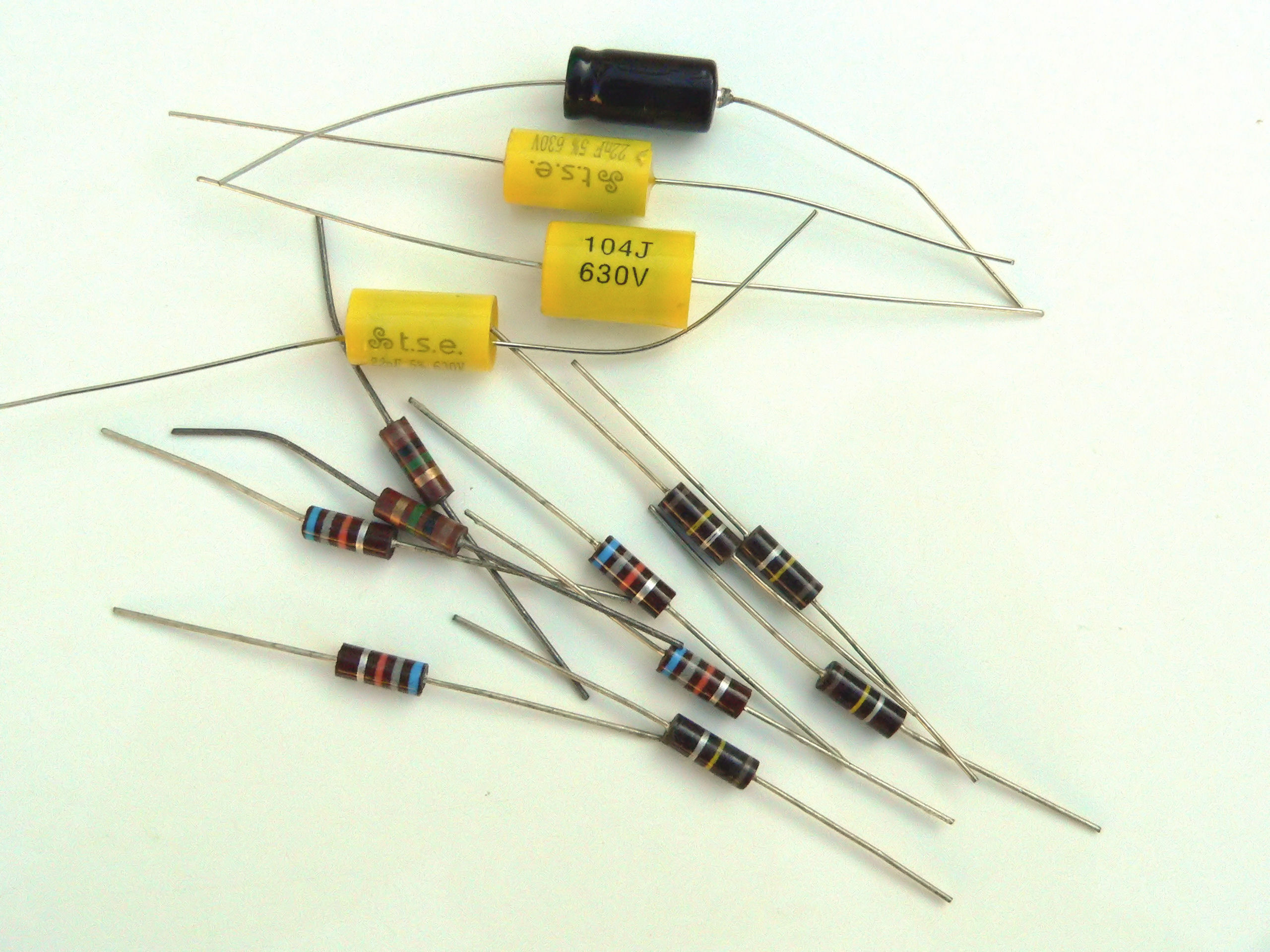Marshall Plexi amps have lots of gain. Most of that gain is up at the front end preamplifier stages and it is in this area that things start to go wrong and have most detrimental effect in an amplifier of this age.
Original 1960’s amplifiers were made using Carbon composition resistors. Many of these resistors have absorbed moisture over the years and have not only changed in value (some are twice at high in resistance as they should be!) but have become unstable and are major contributors of hiss and crackles in your classic amp!
These kits focus on changing just a few key parts for new versions of those 1/2W Carbon Composition Resistors that can preserve the authentic look inside your amplifier but also a) reduce the hiss and noise your amplifier produces to soften and mask your guitars sound and b) improve the reliability of the amplifier and protect it from horrible high voltage faults that can destroy valves and take the amp out right in the middle of your live guitar solo!
So…. Where do we start?
As mentioned earlier, most of the gain in these amps is in the preamplifier stages, and there are a few simple facts about the resistors used in high gain preamp stages that point the way towards what we need to do here.
1. The most noisy resistor type you can use in an amplifier is…… yes… Carbon Composition. However, some might argue that this was part of the original "Marshall sound" and just want to keep those smart looking neat cylindrical Carbon resistors, so we could just change them out for current production, correct value, more stable new Carbon Comp resistors.
2. The higher the value of resistance, the more noise is generated by that resistor. Plexi amps have a few key high value resistances in the preamp stages… input resistors, grid resistors and anode resistors.
3. The more current that is flowing through a resistor, the noisier it becomes and Anode resistors obviously carry considerably more current than input or grid resistors. In particular, carbon composition anode resistors are notorious for changing value with time, breaking down internally and becoming unstable and microphonic. Many vintage amplifiers that make sputtering, hissing and crackling noises do this because anode resistors in the preamp stages have gone unstable, so these are key components to change.
As you can see from the above, the resistors we have discussed here are fundamental components. If you want to improve the performance of your amp but don't want modern large metal film resistors inside it (and technically those are the best performance choice!) then we can at least change them for new Carbon composition ones.
So now we have decided which resistors to change, what’s next?
Apart from resistors, the other components that work hard around the valves in an amplifier circuit are capacitors. These components block very high supply voltages from one stage of your amplifier from the next stage, but allow the relatively small signal voltage to pass through. Larger capacitors also absorb mains hum from the power supply and store and provide surges of boost current to the output stages when you hit that massive power chord, to give you a clean and powerful output sound at maximum output,
1960’s capacitors were very much built using yesterdays technology. “Paper and Oil” may be a quasi-religious chant to those slavishly obsessed with using obsolete technology components in modern day amplifiers… but these were pretty vulnerable components over time. They swell, they sometimes split or burst open, they leak DC and they sometimes go short circuit altogether, passing the very high anode voltage of one valve stage on to the very sensitive grid circuit of the next valve, causing valve bias to go haywire and in extreme cases overdrive valves to destruction.
If the reliability of your amplifier is important to you and to protect the valves, especially the expensive output pair or quad, it’s well worth changing a few coupling capacitors. Our kits include those key capacitors which are built to look like classic Mallory 150 series capacitors for you to change to future proof your amp.
Likewise, the large can style smoothing capacitors and the output valve bias smoothing capacitors are chemical based, rather like a battery, and the fluids in these components dry up over the years. Some HT smoothing capacitors just lose capacity to do their job, resulting in a gradual increase in hum and a reduction in headroom…. But some capacitors will actually burst or in the worst cases explode inside your amplifier, often taking out other components as they go short circuit. The value and style of these components vary within different versions of Marshall Plexi amplifiers, but we do stock a wide range of suitable components to replace them (50uF and 32uF twin can smoothing capacitors and 10uF 160V bias electrolytics are well worth changing, see our store).
Lastly, of course the valves themselves gradually age, losing gain. This results in a flatter, duller sound, less ability to overdrive the output stages and less crunch in your sound. Changing the preamp valves in particular sometimes makes a huge difference to the brightness and clarity of your sound, so you can order the authentic looking Mullard 12AX7 / ECC83 valves from our store to complete that 1960's look and maintain top performance, or see our other Carbon repair & upgrade kit which includes two of the Mullard valves already!
Whether you would like to improve the sound quality of your classic Marshall amplifier, or ensure its reliability in the future, our kits offer a sensible, modern technology solution to making those little improvements to the circuitry that will refresh and renew it for years to come. Each of our kits comes with details about which components fit where and some safety and fitting instructions to help you.

